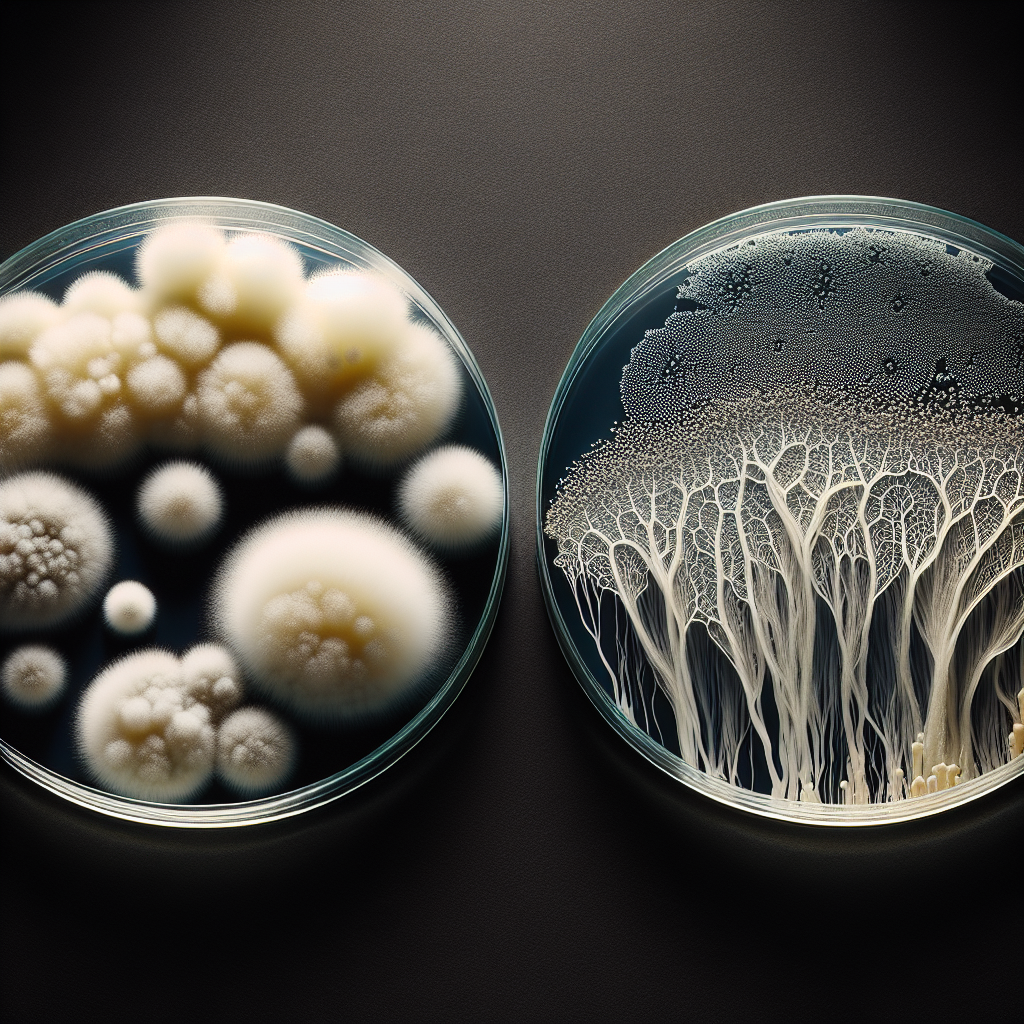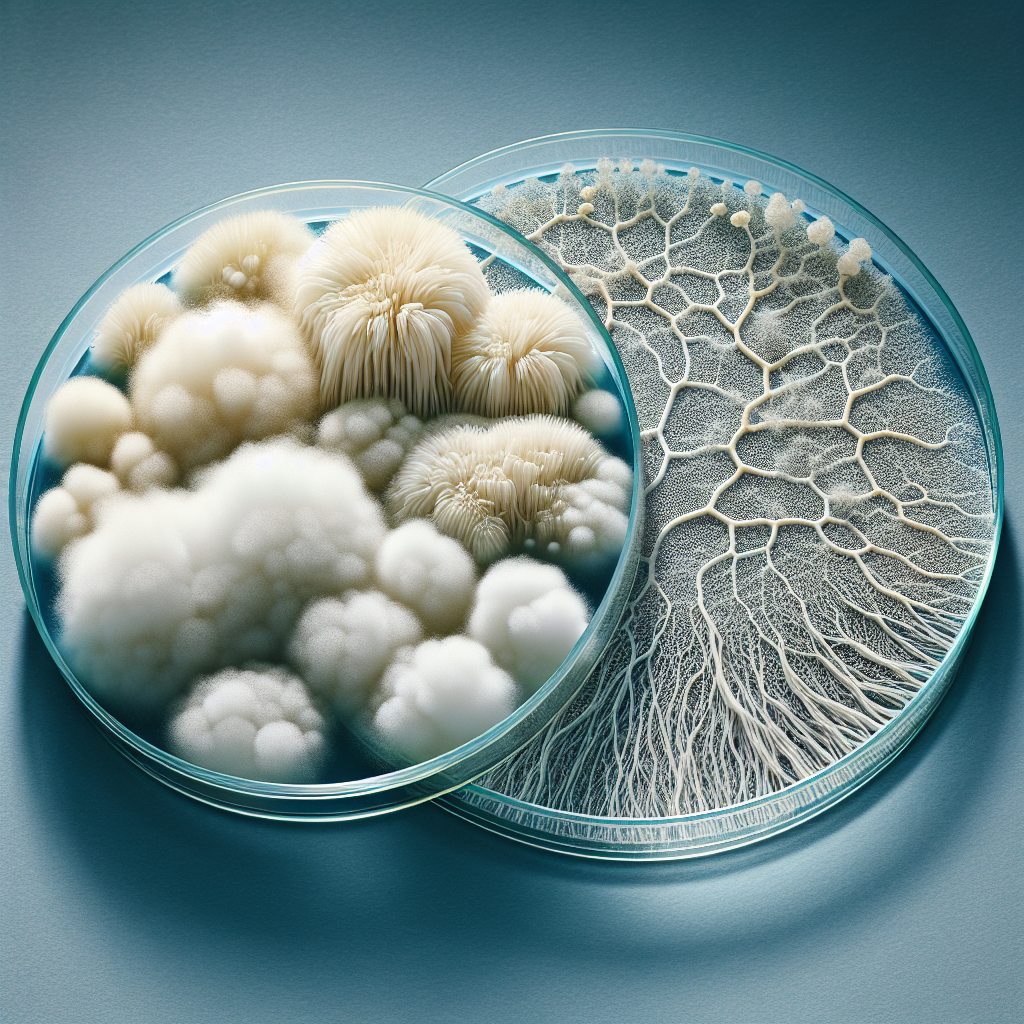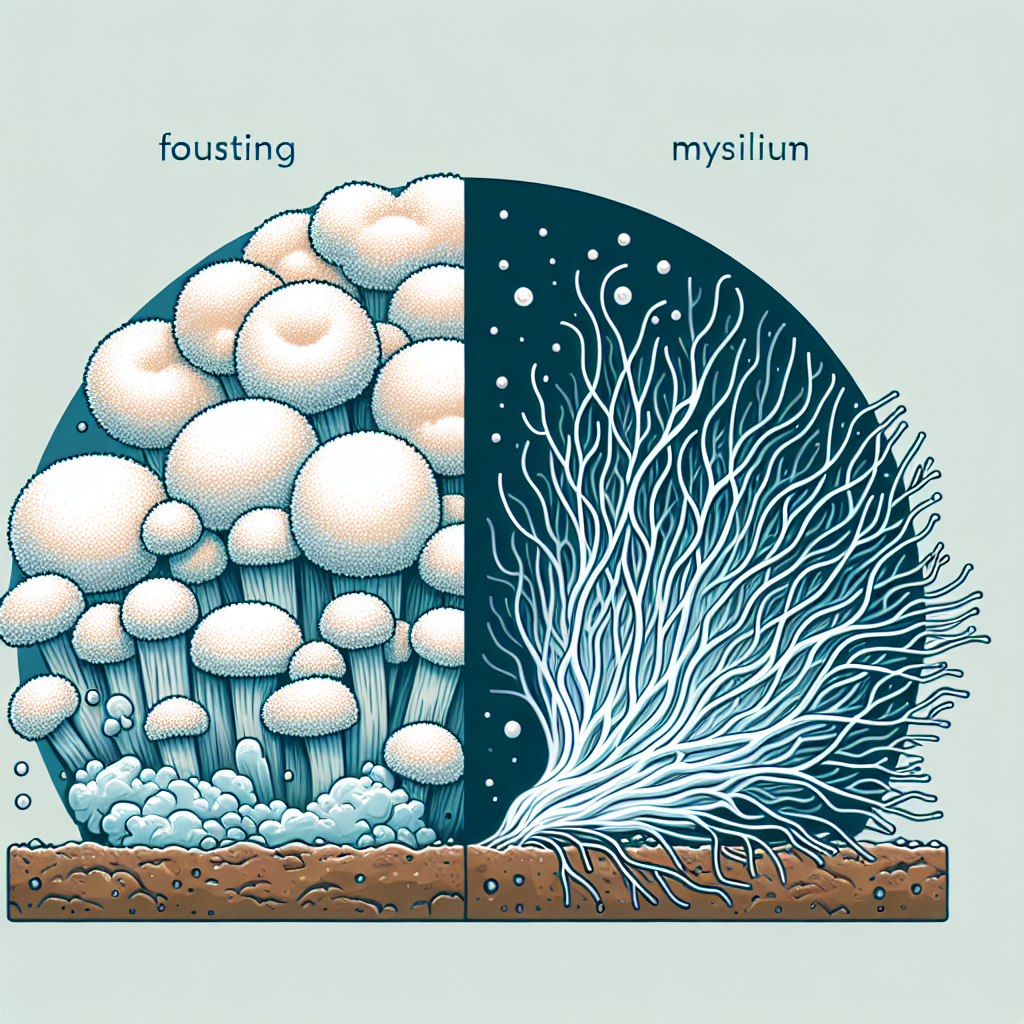In the world of botany and mycology, terminology can often be confusing and overwhelming. This is especially true when dealing with entities such as ‘white mold’ and ‘mycelium’. Your lack of knowledge about their unique characteristics and differences can make it difficult to identify them accurately in your garden or homestead. The article “Understanding the Difference: White Mold vs Mycelium”, seeks to make the distinction clear and easily comprehendible. It explains the characteristics, life cycle, effects, benefits, and most importantly, the significant differences between white mold and mycelium. The knowledge you gain will undoubtedly be beneficial in managing your botanical environment better.
Overview of White Mold
White mold is a common issue that home and garden owners usually face. It is not one specific type of mold, but rather refers to any mold that appears white or light-colored. These molds thrive in predominantly moist and dark environments and can rapidly proliferate given the right conditions.
Defining White Mold
White mold refers to a variety of mold species that have a white or light-colored appearance due to the presence of mycelia, which are thread-like structures of fungus. White mold can grow on a number of organic materials including wood, drywall, food, and plants, given the necessary growth conditions.
Characteristics of White Mold
The characteristics that differentiate white mold from other mold types are texture and coloration. White mold has a fuzzy or powdery appearance and can be either white or light in color. Its structure is often filamentous or ‘cottony’, spreading across materials in a mat of mycelia. Many other molds may begin their growth cycle as white before changing color as they mature, adding to the challenge of distinguishing white mold.
Habitat and Growth Conditions for White Mold
White mold tends to sprout in cool and dimly-lit environments with high humidity and poor ventilation. Such environments that provide a stable source of organic material for it to feed upon. These include basements, crawl spaces, wooden structures, houseplants, and even certain foods. Water-damaged areas and standing water are common hotspots for white mold growth.
Life Cycle of White Mold
The life cycle of white mold starts with the release of tiny, microscopic spores into the environment. These spores, when landing on suitable surfaces, germinate and begin to grow, forming a mycelial mat. If conditions remain favorable, the mold forms structures called fruiting bodies which release more spores, continuing the life cycle.
Overview of Mycelium
Mycelium represents a critical part of a fungus‘s life, serving as the chief site for nutrient absorption from the environment. Understanding mycelium can be an integral part of comprehending fungal growth, including mold.
Defining Mycelium
Mycelium refers to the vegetative part of a fungus consisting of a mass of branching, thread-like structures (hyphae). It serves as a sort of root system for the fungus, aiding in nutrient acquisition and growth.
Characteristics of Mycelium
Mycelium typically appears as white, thread-like filaments forming mesh-like structures in the soil, decomposing organic material, or on the surface upon which the fungus is growing. Depending on the species and environment, it can have different textures, from fluffy and cottony to dense and hard.
Habitat and Growth Conditions for Mycelium
Generally, mycelium thrives in dark, moist, and nutrient-rich environments. This could include soil, compost piles, rotting logs, and certain building materials. The ability to decompose organic material makes mycological species highly adaptable to a variety of growth conditions.
Life Cycle of Mycelium
The life cycle of mycelium begins with the germination of a spore. The sprouting spore gives rise to hyphae, which spread and branch to create a mycelial network. Mycelium continues to grow and branch out whilst absorbing nutrients until it’s mature enough to produce fruiting bodies that release spores and repeat the cycle.

Dealing with White Mold Infestation
Recognizing a white mold infestation early and implementing the necessary measures can prevent structural damage and potential health issues.
Methods to Identify White Mold
White mold can be identified by its characteristic white, cottony or fuzzy appearance. Its presence may also be hinted by a musty odor. Examining the mold’s location and growth pattern can further assist in identification. It’s important to note that lab testing is the only definitive way to identify mold species.
Prevention of White Mold
The best way to prevent white mold is to control moisture levels in your home. This can be achieved by improving ventilation, using dehumidifiers, promptly repairing any leaks, and drying out damp areas. Regularly inspecting plants, foods, and wooden structures can also help identify and curtail white mold growth.
Treatment for White Mold Infestation
Treatment options for white mold infestations include over-the-counter mold removal products, sanitization with a diluted bleach solution, or professional mold remediation services. It’s critical to wear protective equipment when dealing with mold to prevent respiratory and skin issues.
Common Practices to Control White Mold
Common practices to control white mold include maintaining moisture levels, regular cleaning of susceptible areas, using mold-resistant building materials, and promptly addressing any signs of mold growth.
Dealing with Mycelium Growth
While mycelium often serves beneficial roles in the ecosystem, it can sometimes proliferate in unfavorable locations, such as building structures or garden spaces.
Methods to Identify Mycelium
Mycelium can be identified as white or light-colored networks of filaments visible on organic materials like soil, wood, or compost.
Prevention of Mycelium Growth
Preventing mycelium growth involves controlling the conditions favorable to fungal growth – dampness, darkness, temperature, and nutrient availability. Regular inspection of organic materials, such as wooden structures and garden mulch, can aid in early detection of mycelial growth.
Treatment for Militant Mycelium
The treatment methods for hostile mycelium depend on the extent of the fungal growth and its location. Cleanup might require the removal of the infected material or application of antifungal agents, often coupled with efforts to alter the growth-favoring conditions.
Common Practices to Control Mycelium Growth
Common practices to manage mycelium growth include regular inspection of organic material, maintaining dry conditions in indoor spaces, and using antifungal treatment where necessary.

Misconceptions about White Mold and Mycelium
Misidentifications and misunderstandings about white mold and mycelium are common due to their similar appearance and characteristics.
Distinguishing Between White Mold and Mycelium
The main difference between white mold and mycelium is primarily categorical. White mold represents an entire fungal growth, including mycelium and spores. Meanwhile, mycelium is a component of any fungal organism, including molds, serving as their vegetative structure.
Misidentification and Mistaken Characteristics
Because both white mold and mycelium have a white, filamentous appearance, they are often mistaken for each other. Although mycelium is a part of mold, not all white, thread-like structures are indicative of harmful molds.
Debunking Myths about White Mold and Mycelium
A prevalent myth about white mold is that it is less harmful than black or colored molds. However, the color of the mold does not dictate its potential harm. Similarly, mycelium is often misunderstood as being harmful in all conditions, which is not true. Mycelial networks often play a critical role in soil health and nutrient cycling.
Potential Health Risks of White Mold
Although not all molds are harmful, prolonged exposure to certain types of white mold can cause health issues.
Harmful Effects of White Mold
Exposure to white mold can cause allergic reactions like sneezing, skin rash, and eye irritation in sensitive individuals. More severe reactions may include difficulty in breathing or asthma attacks.
Dangerous Levels of White Mold
Dangerous levels of white mold are generally determined by the severity of allergic reactions and the number of spores in the air. Professionals should be called in for remediation when there is extensive visible mold or when health effects are experienced.
How White Mold Affects the Immune System
White mold can affect the immune system by triggering an allergic response, causing the body to produce antibodies against the mold spores. For immunocompromised individuals, some white mold species may cause opportunistic infections.
Potential Health Risks of Mycelium
While mycelium itself is not typically hazardous, it can contribute to mold growth, which in turn could pose health risks in certain situations.
Harmful Effects of Mycelium
Not all mycelium is harmful but can become a threat when it contributes to mold growth. Exposure to airborne mold spores, for which mycelium is a source, might provoke allergic reactions in some individuals or exacerbate existing respiratory conditions.
Dangerous Levels of Mycelium
Identifying dangerous levels of mycelium is subjective as it depends on the potential for mold growth and the resultant spores’ concentration. If large amounts of mycelium are observed or if the growth recurs despite interventions, professional assistance may be warranted.
How Mycelium Affects the Immune System
Mycelium per se is not usually a direct detriment to the immune system. Nonetheless, mold spores, which mycelium helps create, can induce an immune response in susceptible people.
Role of White Mold in the Ecosystem
Despite the potential harm white mold can cause in the home setting, it has a crucial role in ecosystems.
White Mold as a Decomposer
As a decomposer, white mold breaks down dead organic material into simpler compounds. This decomposition process recycles nutrients back into the ecosystem, enriching the soil and providing nutrients for other organisms.
White Mold’s Impact on Plant Life
Excessively high levels of white mold can be detrimental to plant life as it competes with plants for nutrients and may cause plant diseases. However, in natural environments, it plays a vital role in organic matter decomposition, crucial to nutrient cycling and soil health.
White Mold’s Interaction with Other Organisms
White mold could interact with other organisms by forming a symbiotic or parasitic relationship. For instance, some molds aid in nutrient uptake for plants, while others could harm plants or animals by producing potent toxins.
Role of Mycelium in the Ecosystem
Mycelium has a pivotal role in nature, contributing significantly to nutrient cycling and soil health.
Mycelium as a Decomposer
Mycelium acts as nature’s recycling system; it breaks down organic material, e.g., dead leaves or logs, converting it into a form accessible to other organisms. This undertaking enriches the soil and promotes biodiversity.
Mycelium’s Impact on Plant Life
Mycelium can form a symbiotic relationship with plant roots, aiding in nutrient uptake and overall plant health. In certain instances, however, it could also contribute to harmful fungal diseases in plants.
Mycelium’s Interaction with Other Organisms
Much of mycelium’s interactions are beneficial, like the mycorrhizal associations with plants, assisting in nutrient absorption. However, hostile interactions could occur in some contexts, such as when contributing to mold growth in damp buildings or when causing plant diseases.
Conclusion: Understanding the Difference Between White Mold and Mycelium
While white mold and mycelium, in essence, represent different biological realities, understanding their interrelation is critical to managing and preventing mold-related issues.
Primary Differences Between White Mold and Mycelium
The primary difference boils down to white mold being an entire fungal organism, comprising mycelium, spores and, occasionally, fruiting bodies, whereas mycelium is the vegetative network of filamentous cells of a fungus, playing a part in nutrient absorption and growth.
Implications of These Differences
Differentiating between white mold and mycelium can help shape effective strategies for control and treatment. While one might focus on controlling environmental conditions to prevent mold spread, the other could involve interventions related to mycelium’s role within an ecosystem or its ability to contribute to fungal growth in a built environment.
Final Thoughts on White Mold and Mycelium
As we have seen, both white mold and mycelium play crucial roles in nature’s ecological processes. But when confined to enclosed spaces such as homes, excessive growth may lead to structural damage or potential health risks. Therefore, it becomes important to manage these growths and maintain a balance, enjoying nature’s benefits while avoiding the potential drawbacks.
